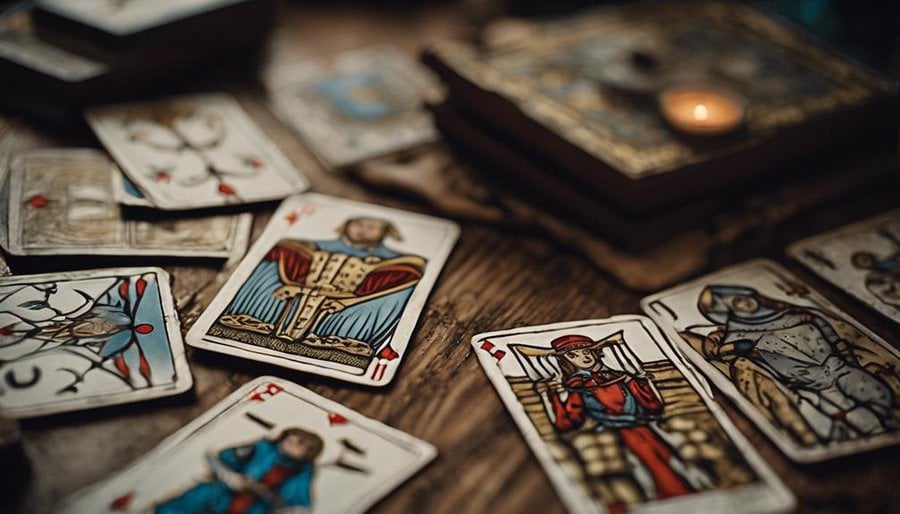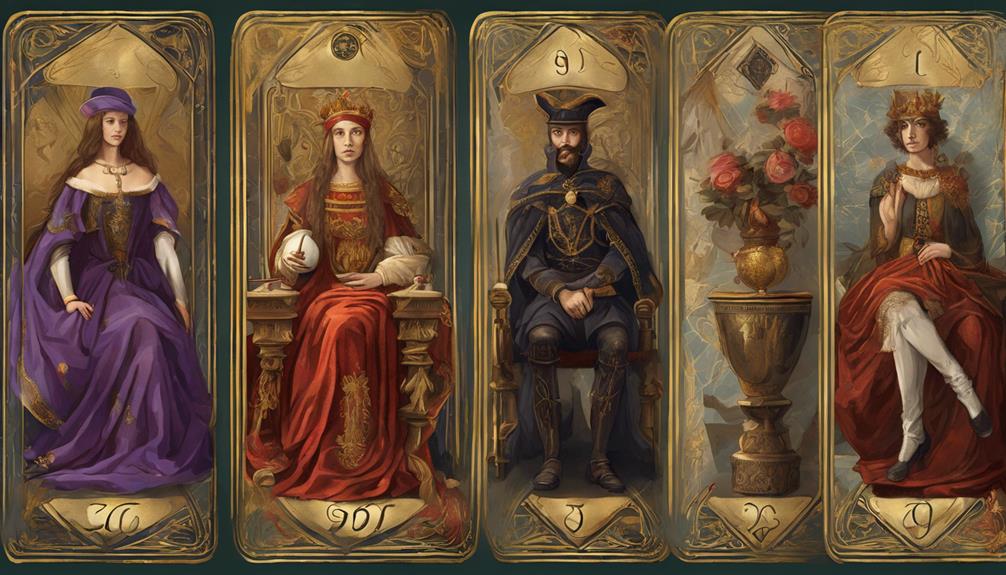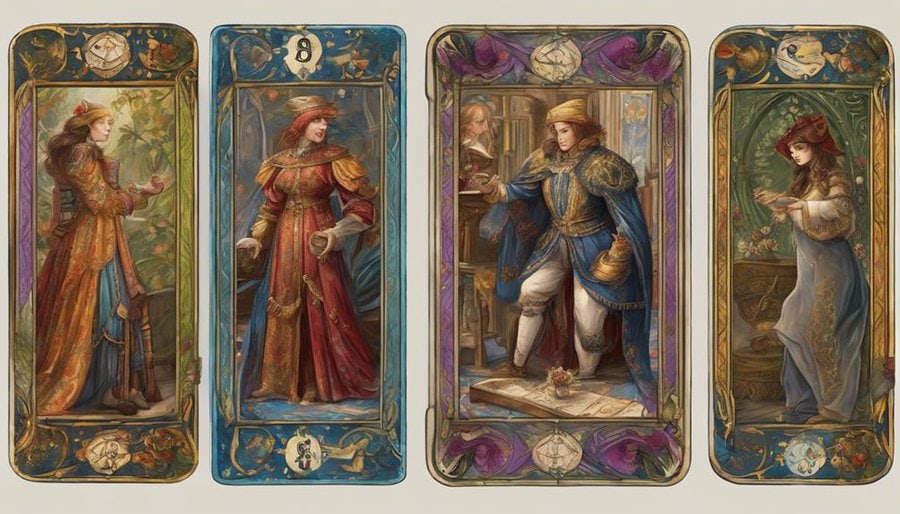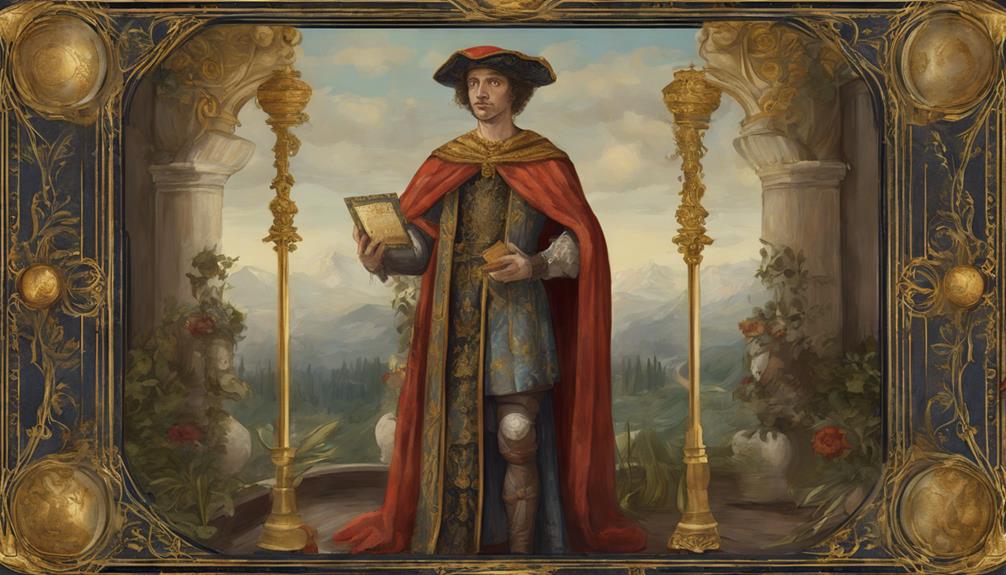What the Discovery of the Visconti-Sforza Deck Revealed About Tarot’s Past

"The Visconti-Sforza Deck: Unveiling Tarot's Mysterious Origins and Symbolism."
The Visconti-Sforza Deck is one of the oldest and most famous tarot decks in existence. It dates back to the 15th century and is known for its intricate symbolism and beautiful artwork.
This deck has been the subject of much speculation and mystery over the years, with many people trying to uncover its true origins and meaning. Some believe that it was created for the Visconti and Sforza families of Italy, while others think it may have had a more esoteric purpose.
Despite the mystery surrounding its origins, the Visconti-Sforza Deck remains a popular choice for tarot enthusiasts and scholars alike. Its rich symbolism and historical significance make it a valuable tool for anyone interested in the history and practice of tarot reading.
The Origins of Tarot Cards
The origins of tarot cards can be traced back to the late 14th century in Europe, where they were initially used as playing cards before evolving into a tool for divination and spiritual exploration. Within the intricate tapestry of ancient traditions, tarot emerged as a medium for individuals to delve into the depths of their subconscious and explore the mysteries of the universe. It's a practice steeped in symbolism and mystique, offering a pathway to connect with the collective wisdom of generations past.
Through the act of shuffling the deck and drawing cards at random, one sets off on a journey of self-discovery and introspection, seeking guidance and insight from the archetypes and symbols depicted on each card. The tarot invites individuals to embrace their intuition and tap into a domain beyond the constraints of the material world, allowing for a moment of freedom from the shackles of everyday life.
Intricate Symbolism in Tarot
The symbolism found within Tarot decks is a rich tapestry of meaning, each card carefully crafted to convey profound insights and truths.
From the intricate imagery to the hidden metaphors, Tarot cards offer a glimpse into the depths of human experience and the mysteries of the universe.
Exploring these symbols can reveal layers of wisdom and guidance for those who seek to understand their significance.
Symbolism in Tarot
Symbolism in Tarot reveals profound layers of meaning embedded within each card, inviting seekers to explore deeper into the mysteries of the human experience. The symbolic interpretations and allegorical meanings found in Tarot artistry and Tarot history are rich with significance, providing a tapestry of wisdom for those who seek to unravel its secrets. Each symbol within the cards acts as a doorway to different aspects of life, offering insights and reflections that transcend the mundane. To illustrate the depth of symbolism in Tarot, consider the following table:
| Symbol | Meaning |
|---|---|
| Moon | Intuition, mystery |
| Tower | Destruction, renewal |
| Sun | Essentiality, success |
| Star | Hope, inspiration |
Meaningful Imagery
Exploring the intricate symbolism within Tarot imagery reveals layers of profound meaning that beckon seekers to unravel the mysteries of the human experience.
Tarot cards, with their artistic expressions, serve as windows into the subconscious, offering symbolic interpretations that resonate with individuals on a deep level. Each card is a tapestry of symbols carefully woven together to convey universal truths and archetypal themes.
The Fool's leap of faith, the High Priestess's intuitive wisdom, or the Tower's sudden upheaval—all these images hold significance beyond their artistic beauty. Through meaningful imagery, Tarot not only mirrors the complexities of life but also provides a mirror for self-reflection and personal growth, inviting contemplation and exploration of the soul's journey.
Hidden Metaphors
Delving into the intricate tapestry of Tarot reveals hidden metaphors that speak volumes beyond mere imagery. The cards aren't just a collection of symbols; they're a doorway to profound hidden meanings waiting to be deciphered by those who seek a deeper understanding.
Each card in the deck serves as a symbolic representation of various aspects of life, inviting contemplation and reflection. The Tarot's hidden metaphors hold the key to revealing insights into the human experience, offering guidance and wisdom to those who are open to receiving it.
Evolution of Tarot Decks
Throughout the centuries, the Tarot decks have undergone a fascinating evolution, reflecting changes in art, culture, and spiritual beliefs. The evolutionary changes in Tarot decks trace back to their origins in the 15th century. Initially serving as playing cards for the nobility, Tarot decks evolved into tools for divination, self-reflection, and spiritual exploration. The artistic proof of Tarot decks is a validation to the creativity and innovation of humanity. From the intricate designs of the Visconti-Sforza deck to the modern interpretations by contemporary artists, each deck tells a unique story through its imagery and symbolism.
As Tarot gained popularity beyond the aristocracy, artists began infusing the cards with deeper esoteric meanings, drawing inspiration from alchemy, astrology, and Kabbalah. This artistic proof not only enriched the visual appeal of Tarot decks but also deepened their symbolic significance. Today, Tarot decks come in various styles, from traditional to avant-garde, appealing to a diverse audience seeking guidance, introspection, and spiritual connection. The evolution of Tarot decks is a validation to the enduring power of symbolism and storytelling in human culture.
Cultural Significance of Tarot

The cultural significance of Tarot lies in its deep-rooted historical origins, intricate symbolism, and the spiritual beliefs it embodies.
Through centuries, Tarot has served as a mirror of societal values, reflecting the beliefs and concerns of diverse cultures.
Its enduring presence across continents underscores the universal appeal and timeless allure of this enigmatic art form.
Historical Origins of Tarot
With roots tracing back to the 15th century in Europe, the historical origins of Tarot reveal a rich tapestry of cultural significance that has captivated generations seeking spiritual guidance and introspection.
The evolution of Tarot's symbolism and origins is intertwined with the social, political, and religious contexts of the time, reflecting the beliefs and values of diverse communities.
Initially used for playing games, Tarot gradually transformed into a tool for divination and self-reflection, gaining historical significance as it spread across continents.
Its journey from a simple card game to a complex system of symbols and archetypes mirrors the evolution of human consciousness and the quest for deeper understanding.
The historical origins of Tarot offer a glimpse into the collective psyche of humanity and the enduring quest for meaning.
Symbolism in Tarot
Delving into the intricate tapestry of Tarot's symbolism reveals a profound reservoir of cultural significance that resonates through the ages.
- Symbolic interpretations: Tarot cards are rich in symbolic meanings, reflecting various aspects of human experiences and emotions.
- Historical context: The symbols in Tarot decks often carry historical significance, linking them to different periods and cultures.
- Visual storytelling, esoteric meanings: Each card in a Tarot deck tells a story through its intricate illustrations, conveying deeper esoteric meanings beyond the surface images.
Spiritual Beliefs in Tarot
Exploring the spiritual beliefs intertwined with Tarot reveals a tapestry of cultural significance that transcends time and resonates deeply with diverse human experiences and interpretations.
Through spiritual practices, individuals have long utilized Tarot as a tool for introspection, guidance, and connection to the unknown. The mystical symbolism present in Tarot cards serves as a mirror reflecting the complexities of the human psyche and the mysteries of the universe.
Across different cultures and belief systems, Tarot has been embraced for its ability to spark intuitive insights and foster a deeper understanding of one's path in life. Its enduring popularity speaks to a universal longing for wisdom, guidance, and spiritual connection that transcends the boundaries of time and tradition.
Artistry of Visconti-Sforza Deck

The artistry of the Visconti-Sforza Deck captivates with its intricate symbolism and exquisite detailing, offering a glimpse into the rich cultural tapestry of the Renaissance era. This historical deck, created in the 15th century, showcases the mastery of artistic techniques prevalent during that period.
Here's a closer look at what makes the art of the Visconti-Sforza Deck truly remarkable:
- Symbolism: Each card is meticulously crafted to convey deep symbolic meanings, drawing on allegorical imagery that was significant in the Renaissance worldview.
- Color Palette: The vibrant colors used in the deck reflect the opulence and sophistication of the era, with rich golds, deep blues, and lush greens evoking a sense of luxury and grandeur.
- Detailed Designs: From the delicate patterns adorning the clothing of figures to the ornate borders framing each card, the attention to detail in the Visconti-Sforza Deck speaks to the skill and dedication of the artists involved in its creation.
Mysteries Unveiled by Discovery
In unraveling the layers of historical significance within the Visconti-Sforza Deck, a profound revelation of mysteries emerges, offering a glimpse into a bygone age's enigmatic allure. The mysterious origins of the deck evoke a sense of curiosity, inviting speculation on the intricate web of influences that shaped its creation. Each card, with its intricate artistic symbolism, serves as a portal to a world where symbolism was a language spoken by the initiated few, weaving narratives of power, mysticism, and human experience.
The Visconti-Sforza Deck, with its rich tapestry of images, hints at deeper meanings and hidden truths waiting to be deciphered. The enigmatic figures and symbols depicted on the cards whisper of ancient traditions and esoteric knowledge, sparking the imagination and beckoning the seeker to explore the territories of the subconscious mind. As the veil is lifted on these cryptic designs, the mysteries of the past begin to unfold, revealing a treasure trove of wisdom and insight that transcends time and space.
Tarot's Influence on History

With a legacy spanning centuries, Tarot cards have woven themselves into the intricate tapestry of history, leaving an indelible mark on the domains of divination and symbolism. Tarot's historical impact is profound, shaping cultural beliefs and inspiring artistic representation across the ages.
Three key aspects highlight the influence of Tarot on history:
- Cultural Significance: Tarot cards have been utilized by various cultures as a tool for spiritual guidance and self-reflection, showcasing how beliefs and practices have evolved over time.
- Literary Inspirations: Throughout history, Tarot symbolism has often been integrated into literature, influencing the narratives of renowned authors and poets, adding layers of depth and mystery to their works.
- Political Allegory: Tarot's rich imagery has served as a source of political allegory, reflecting societal norms and challenging conventional power structures through its artistic representation.
Legacy of Visconti-Sforza Deck
Having left an enduring mark on history, the legacy of the Visconti-Sforza Deck stands as proof of the intricate interplay between art, symbolism, and cultural heritage. The deck's artistic techniques, characterized by intricate details and vibrant colors, showcase the skilled craftsmanship of the Renaissance era. Each card is a masterpiece, reflecting the artistic brilliance of its creators and the societal values of the time.
Within the historical context of 15th-century Milan, the Visconti-Sforza Deck served as more than just a game; it was a reflection of the noble families' power, wealth, and cultural sophistication. The intricate designs and symbolic imagery on the cards not only entertained but also conveyed important messages about life, love, and destiny.
Today, the legacy of the Visconti-Sforza Deck lives on, inspiring artists, historians, and tarot enthusiasts alike. Its impact on the world of art and divination is undeniable, serving as a timeless reminder of the beauty and complexity that can be achieved through the fusion of artistry and symbolism.
Frequently Asked Questions
How Were the Visconti-Sforza Deck's Cards Used in Daily Life During the Renaissance Period?
In Renaissance life, the Visconti-Sforza deck's tarot symbolism infused daily rituals with mystical intrigue. These cards, akin to Renaissance art, were cherished for their divine guidance, shaping the era's spiritual tapestry with profound wisdom.
Are There Any Hidden Messages or Cryptic Meanings Believed to Be Embedded Within the Visconti-Sforza Deck's Artwork?
Hidden symbolism within the Visconti-Sforza deck's artwork has long intrigued scholars and enthusiasts. Artistic interpretations vary, sparking debates on cryptic meanings embedded in the cards. The deck's mysteries continue to captivate curious minds.
What Materials Were Used in the Creation of the Visconti-Sforza Deck, and How Were They Sourced?
Artisans of the Visconti-Sforza deck meticulously sourced high-quality materials like parchment and pigments for their creation. Employing intricate artistic techniques, they brought the cards to life, reflecting a time-honored tradition of craftsmanship and creativity.
How Did the Discovery of the Visconti-Sforza Deck Impact the Modern Practice of Tarot Reading?
The discovery of the Visconti-Sforza deck profoundly impacted modern tarot reading. Its historical significance and authenticity influenced interpretation, leading to a deeper understanding of tarot's origins and symbolism, enriching the practice for enthusiasts worldwide.
Are There Any Specific Rituals or Traditions Associated With Using the Visconti-Sforza Deck for Divination Purposes?
Engaging in ritualistic practices with the Visconti-Sforza deck reveals a gateway to historical significance. Each card's intricate design and symbolism serve as a tapestry of wisdom, inviting users to explore tarot's profound roots.











